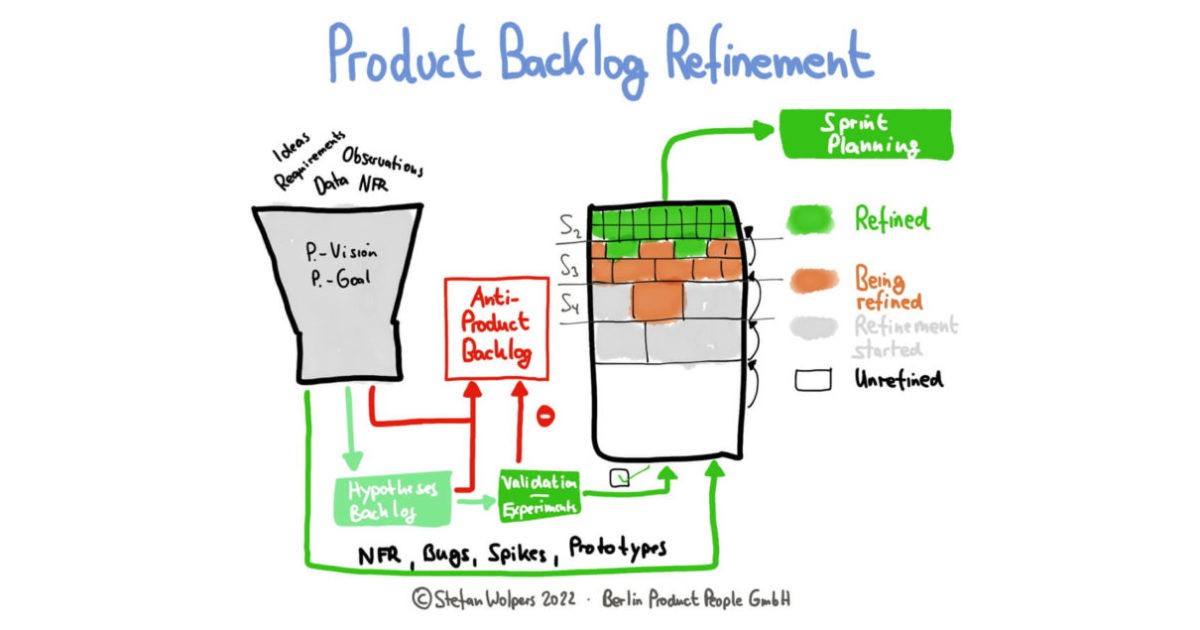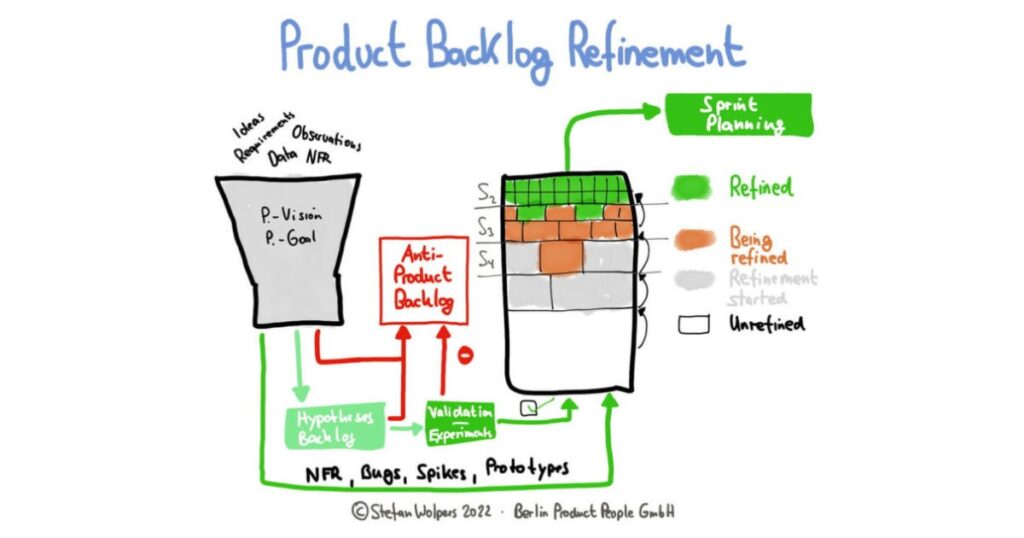When implementing the Scrum Enterprise Model, many organizations frequently encounter issues during Product Backlog Refinement meetings. Here are some typical questions and practical solutions:

- “Why do developers still ask questions about requirements we’ve already discussed and recorded during refinement meetings?”
Answer:
This is natural—just like how students often don’t score 100% on tests despite all content having been covered in class. The key is to accept this reality and continuously improve your practices.
Recommended Improvements:
- Focused Explanation: Prioritize explaining complex, high-priority backlog items in detail. Less complicated items can be addressed briefly or later.
- Team-led Clarification (“Teach-back”): Encourage participants to review requirements beforehand and articulate their understanding during the meeting or prepare at least three questions each.
- Encourage Early Questions: Actively thank team members who raise questions during development, encouraging them to bring these up sooner—preferably during refinement sessions or daily stand-ups—instead of delaying until the issue escalates.
- Continuous Improvement: Reflect on why critical points may have been missed. Consider creative methods like visual aids, role-playing, concise summaries, or even a bit of humor to enhance retention.
- “Refinement meetings are too lengthy, resulting in review fatigue and low efficiency.”
Answer:
Establish clear guidelines and enforce them strictly (consider incentives for compliance):
- Time-boxing: Stick firmly to an agreed time-box (e.g., 90 minutes). Prepare backlog items carefully to maximize productivity within this timeframe.
- Small Batches: Only refine items relevant to the upcoming iteration. Hold multiple shorter sessions (e.g., 30-minute segments) to maintain engagement and effectiveness.
- “Developers claim they’re too busy to attend refinement meetings.”
Answer:
“Sharpening the axe doesn’t delay chopping wood.”
- Formalize Refinement Time: Allocate explicit capacity (e.g., 5-10%) within each iteration dedicated to backlog refinement.
- Flexibility and Negotiation: Collaboratively schedule refinement sessions with the team to fit their rhythm and avoid creating a negative cycle (e.g., insufficient refinement leading to chaotic future sprints).
- “You mentioned refinement meetings shouldn’t involve detailed discussions. When should we discuss details then?”
Answer:
The refinement meeting is fundamentally not a “discussion” meeting.
- Clarify, Don’t Debate: The Product Owner’s (PO’s) responsibility is to clearly communicate and align understanding of the backlog items—not to discuss or negotiate requirements with developers. Requirements discussions should primarily occur between the PO and stakeholders or users, rather than between the PO and developers.
- Focus on ‘What’, not ‘How’: Clearly articulate what is required (the user’s needs and acceptance criteria), leaving the implementation details (“how”) to the development team.
- “How can we ensure consistent understanding across Product, Development, and Testing teams?”
Answer:
The Product Owner must actively verify and ensure consistent understanding among team members.
- Teach-back Approach: Have developers and testers restate requirements in their own words. The PO can ask clarifying questions to confirm alignment.
- Encourage Questions: Team members proactively raise questions to clarify their understanding and confirm alignment around the requirements.
- Acceptance Criteria: Encourage development and testing teams to write preliminary acceptance criteria, providing clarity on expectations and aiding alignment.
- “To what level of detail should user stories be written? Should they cover every detail, from workflow descriptions down to default dropdown values?”
Answer:
Follow the INVEST principle for user stories:
- Size: Ideally, user stories should represent work items of approximately 1–3 person-days.
- Level of Detail: Stories should be detailed only to the extent necessary to establish a common understanding within the team. Over time, teams naturally accumulate shared knowledge and “common sense,” reducing the need for exhaustive detail. Initially, this may involve more effort or occasional rework. However, regular, daily collaboration with the PO ensures that any unclear details are promptly addressed, greatly reducing the risk and cost of rework. (Note: Daily communication is crucial—weekly alignment is insufficient and could result in high rework costs.)
By adopting these practices, your organization can significantly improve the efficiency and effectiveness of your Product Backlog Refinement meetings under the Scrum Enterprise Model. We hope everyone can successfully import Scrum Enterprise Model and keep improving and making continuous progress in every Scrum practice.
